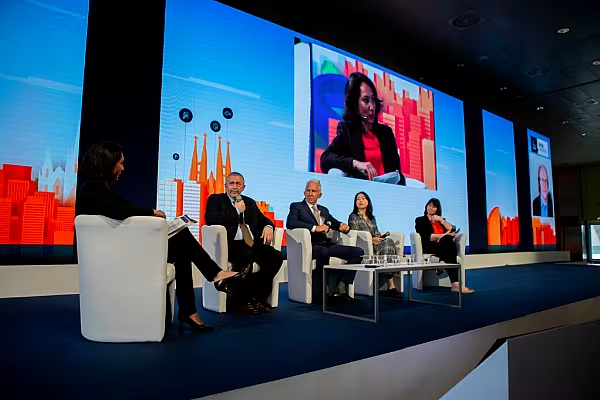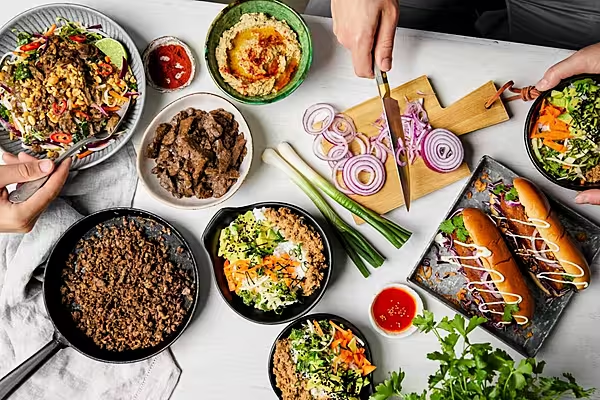As the GFSI Conference in Barcelona heads into its final day, ESM’s Conor Farrelly reports on Day Two’s proceedings.
Day Two of the GFSI Conference 2022 kicked off with a session outlining the food safety group’s agenda. Tom Wiester, vice-president of global food safety and science affairs at Starbucks and vice-chair of the GFSI Steering Committee, started the discussion with a presentation on the GFSI’s capability-building programme and the Global Markets Programme, which is in the process of being reshaped.
This reshaping first arose in the form of a consultation process with various GFSI members and was summed up by GFSI senior manager Anne Gerardi, who said that the group “needs to unlock the potential we haven’t used yet for capability-building programmes”, to maximise the programme in its new form.
The GFSI will look to increase its oversight around food safety, as well as using its position to influence food safety trends, with Gerardi adding, “When GFSI wants to change something, we want the entire world to change with us.”
Next up in the morning session, Marie-Claude Quentin, GFSI senior technical manager, discussed the organisation’s vision for a new model of auditor training and professional development, beginning the dialogue by stating, “We are talking about auditor confidence again, but this time with pride.”
Quentin was joined by Andrew Baines, Exemplar Global, Inc., Przemyslaw Tronina, CEO of Auditors Hub, Natasa Matyasova, head of quality management at Nestlé, and LeAnn Chuboff, VP of technical affairs at SQFI, and this session focused on the ins and outs of being an auditor, where and how GFSI can improve its auditing processes, and issues that have emerged in previous years.
GFSI Benchmarking Requirements
Walmart’s Sara Mortimore led the morning’s next session, which explored the GFSI’s long-running benchmarking requirements, which remain the world’s most widely accepted benchmark for food safety certification programmes, with 140,000 certificates worldwide.
The benchmarking requirements were described by Karin Kreider of the ISEAL Alliance as “providing the guidepost for stakeholders as to what is acceptable practice [in sustainability]”. The benefits of the benchmark requirements were touched on by Hugo Byrnes of Ahold Delhaize, who stated, “By creating a minimum level, you can gradually raise the bar,” adding that the first benchmark requirements booklet was 20 pages, and it has now been expanded and adapted to provide even greater security and assurance for consumers.
Elsewhere, Angela O’Donovan of BRCGS compared the trust that consumers put in the organisation to oxygen, “as you don’t realise its importance until you don’t have it.”
Education And Training
Following on from this discussion, the attention moved to innovations in food safety, with Jim Clark and Andrew Clarke (of Smrt English and Loblaw, respectively) discussing the challenges around training and education across the industry, and guiding manufacturers who don’t speak English as a first language into incorporating the correct food safety procedures.
According to Jim Clark, “blended learning is the norm now,” after the pandemic forced the public to assimilate to technology. He preached the benefits of virtual-reality learning, citing the example of Immerse VR, a group that has begun teaching food safety through virtual-reality goggles, marking the first step into the metaverse for the teaching of food safety.
Elsewhere, Janet Fox of HelloFresh – the disruptive meal kit delivery group – discussed the group’s “maniacal focus on temperature control” and the different methods that it has employed to ensure the greatest level of food safety in this regard, including cooperating with Sensitech, a supply chain management group.
Electronic Traceability
Yujeong Choi, the deputy director of the Food Safety Policy Division in the Ministry of Food and Drug Safety (MFDS) in South Korea, was next to speak at the conference. Choi outlined a number of food safety innovations currently in use in the country, including an electronic traceability system that applies to infant food and several other food groups at the distribution stage, as well as a hazardous food sales prevention system, which sends a warning to retailers of recall notices on certain products and prevents the sale thereof.
Choi said that the rapid manner of implementation of these new food safety guidelines is down to the “regulatory sandbox” that allows for fast integration of new rules across the entire country.
Later, Peter Wend of the Federal Office of Consumer Protection and Food Safety, Germany, gave his perspective on innovations within food safety, using the example of a digital database across Germany’s 16 provinces, which helped control goods and foods more effectively through increased communication and the rapid spread of information.
With the rise of e-commerce in the grocery retail sector, Wend added that it is vital that those in the sector “ensure that consumers find food safety at the store around the corner, and also when shopping on the Internet.”
Sustainability Resilience
Sustainability was mentioned heavily across the first two days at the GFSI Conference, and it was the centre of a discussion on Day Two around building resilience into the supply chain through sustainability.
Eduardo Martinez of Restaurant Brands International, Bertrand Swiderski of Carrefour, and Nicole Rakobitsch from Organic Valley joined Lisa Spicka of NSF International in discussing the topic. The three representatives talked through each group’s sustainability strategy, with numerous references to the difficulty in reducing Scope 3 emissions, which are those produced by supply chain partners.
Swiderski outlined the challenges of sustainability within the supply chain, saying, “Today it is not enough to work with just a supplier, you have to work from farm to consumer,” in order to ensure that all sustainability requirements are met.
Other challenges faced when incorporating sustainability into supply chains is resistance in different areas of operations, with Martinez stating that many of Restaurant Brands International’s franchisees “see sustainability as a cost, not an investment.”
Elsewhere, Swiderski mentioned the rise of innovations such as blockchain, with the caveat that “the consumer is not ready today [...] but will have to be in the future.”
Read More: GFSI Conference 2022 – Day One Review
© 2022 European Supermarket Magazine – your source for the latest A-brand news. Article by Conor Farrelly. Click subscribe to sign up to ESM: European Supermarket Magazine.














